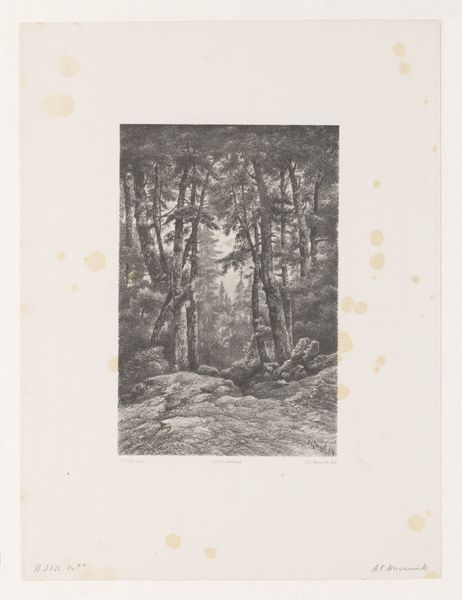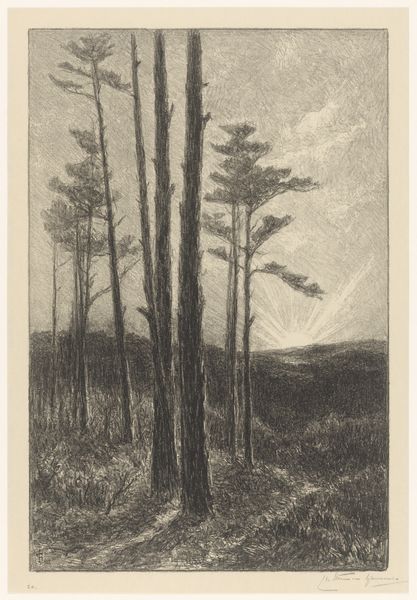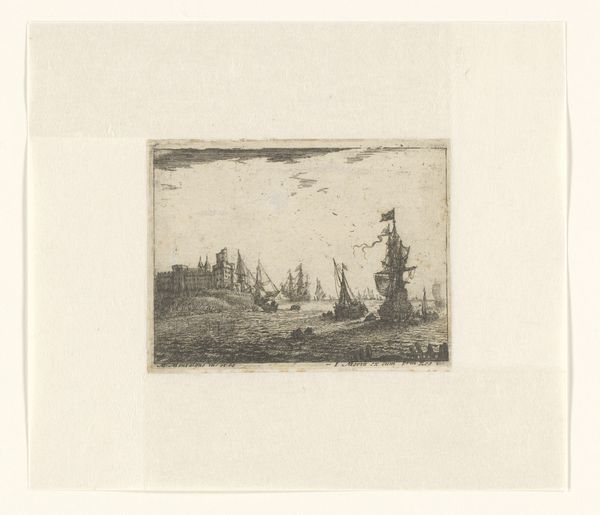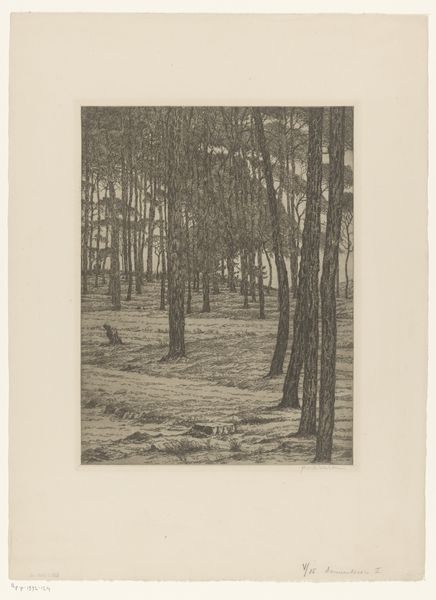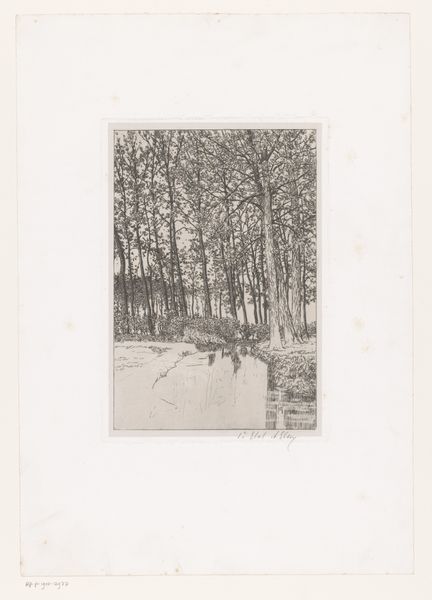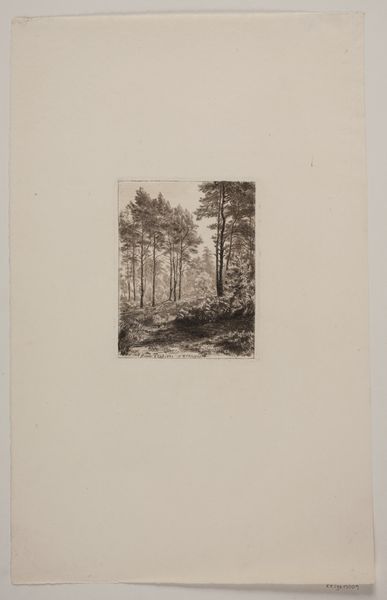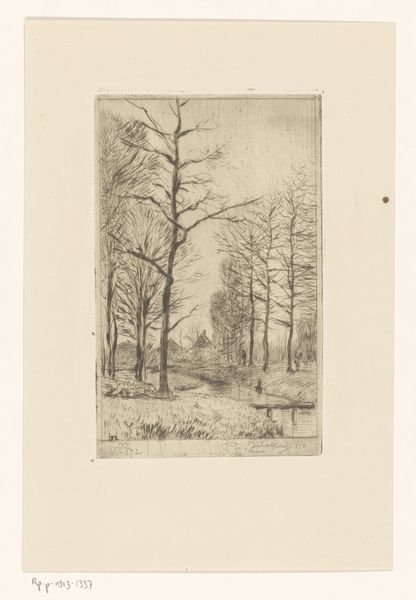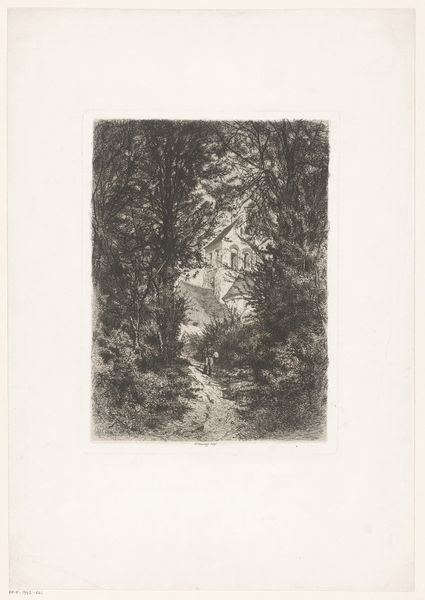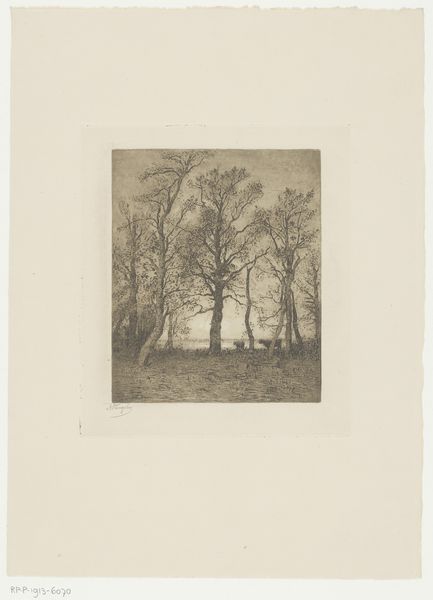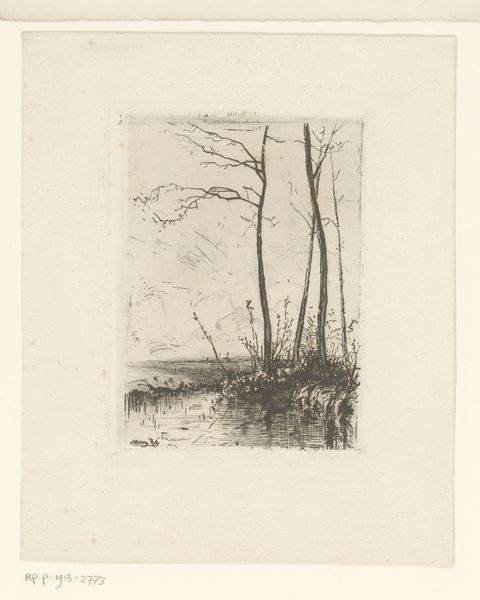
drawing, pencil
#
pencil drawn
#
drawing
#
pencil sketch
#
old engraving style
#
landscape
#
pencil drawing
#
forest
#
pencil
#
line
Dimensions: height 634 mm, width 505 mm
Copyright: Rijks Museum: Open Domain
Curator: Good morning. We are standing before Carel Nicolaas Storm van 's-Gravesande’s "Reichswald te Kleef," created between 1851 and 1924, currently held at the Rijksmuseum. It's a pencil drawing showcasing his mastery of line and composition. Editor: It strikes me immediately with its muted, almost melancholic mood. The pencil work, particularly in the central forest scene, feels so delicate. And the various smaller compositions placed around it adds a fascinating structural complexity. Curator: Indeed, the layering creates an intriguing visual architecture. Notice how van 's-Gravesande employs line as both contour and shading, generating depth and volume through delicate variations in pressure. The negative space becomes just as significant as the rendered forms. Editor: The decision to surround that central landscape with the smaller scenes intrigues me. Is it a reference to the tradition of the artist's sketchbook? Or could there be some commentary on how we frame our experiences within a landscape? Curator: Perhaps it does both! Consider how landscape art of this period was frequently deployed to cultivate a particular national identity and celebrate connection with nature. Yet by showing studies surrounding it, van 's-Gravesande destabilizes that idea. Instead, this drawing highlights art’s reflective process, where the act of observation and translating perception are paramount. The Reichswald’s identity lies as much in those acts as any symbolic nation-building function. Editor: That brings such a different understanding to the artwork. I saw only the Romantic yearning for nature, perhaps too easily as the idyllic scene. Curator: The Romantic interpretation holds too; that’s what gives the work its power. It's in the visual relationships. The texture, contrasts between foreground and background – that’s how the composition achieves depth. Editor: Looking again, seeing those elements, I begin to reconsider how "complete" artwork should be presented. How the artistic vision reveals itself with studies. This artist seemed comfortable questioning those assumptions in their time. Curator: Well put, this work encapsulates a moment of artistic evolution – a negotiation between historical, representational demands, and the artist’s individual exploration of form.
Comments
No comments
Be the first to comment and join the conversation on the ultimate creative platform.
